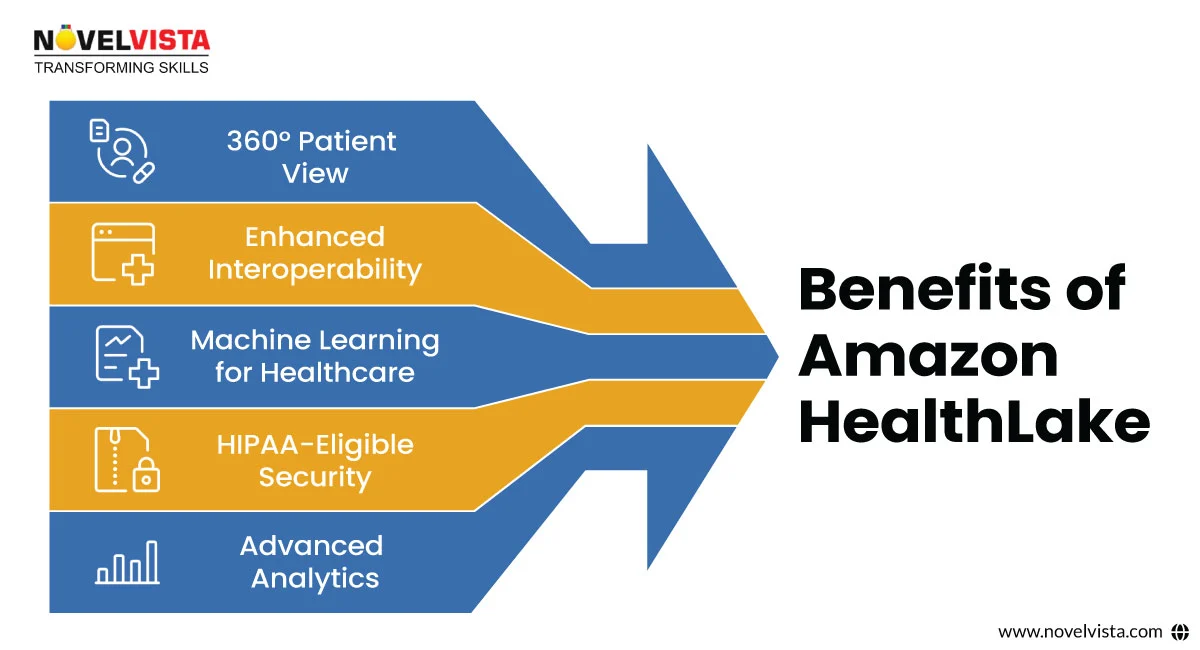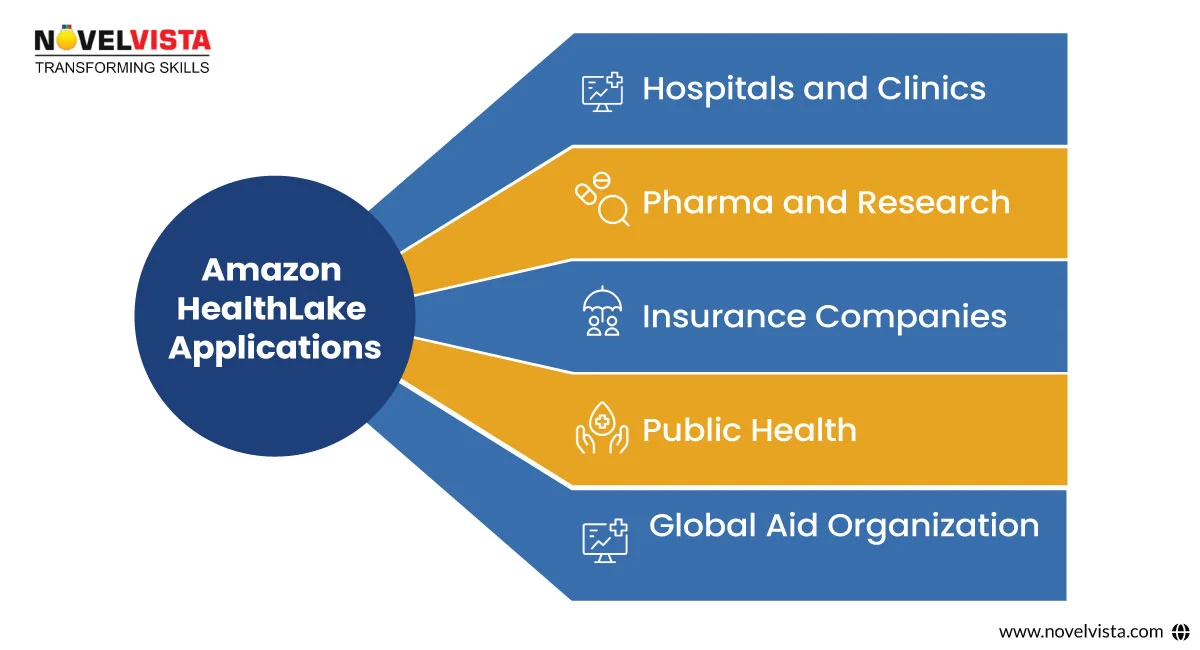Healthcare organizations around the world are drowning in data—but not the kind that’s ready to save lives. Over 80% of healthcare data is unstructured, including doctor’s notes, medical imaging, pathology reports, and audio files. This presents a huge challenge for organizations trying to move insights forward, improve results, and comply with regulatory standards.
Traditional data systems can’t “understand” the natural language or visual elements of this unstructured data, making it difficult to search, categorize, or analyze. Even Electronic Health Record (EHR) systems face problems to combine this data across different sources.
The result? Valuable information usually remains trapped in silos, delaying patient care, stalling research, and overwhelming IT teams. Enter Amazon Web Services (AWS) HealthLake—a breakthrough solution from AWS that aims to bridge this gap.
AWS HealthLake is a HIPAA-eligible service designed specifically to store, transform, query, and analyze health data in the cloud. Using natural language processing and artificial intelligence, it automatically structures unstructured data into a format that aligns with the FHIR (Fast Healthcare Interoperability Resources) standard.
Here’s how it works:
Basically, AWS HealthLake makes sense of messy health data so organizations can use it to execute action and better outcomes.
Let’s talk about impact. Here are just a few advantages of adding AWS HealthLake into your system:

This level of intelligence and connectivity aligns perfectly with modern AWS healthcare solutions , allowing providers to shift from reactive to proactive care models.
So, where does HealthLake shine in real-world scenarios?

You can also explore use cases where AWS HealthLake works with other AWS tools like AWS Online CloudShell for faster system delivery or Deloitte AWS to build flexible industry-grade solutions.
To truly understand the power of AWS HealthLake, you need to get familiar with the FHIR (Fast Healthcare Interoperability Resources) standard. FHIR is a standard recognized all over the world for structuring and sharing electronic healthcare data. It provides a consistant format for data, making it easier to transfer health information across different systems, providers, and applications.
Think of FHIR as a universal language for healthcare data. It allows better collaboration within hospitals, insurers, research institutions, and tech providers.
It uses FHIR to normalize all imported data, making sure that whether you’re pulling information from Electronic Health Records (EHR), radiology systems, or wearable tech, everything syncs up in a meaningful and searchable way. This improves healthcare data interoperability and removes roadblocks caused by incompatible systems or outdated record formats.
What truly sets AWS HealthLake apart is its tight combination with other AWS healthcare solutions.
Here’s how it connects to the larger AWS ecosystem:
These integrations enable organizations to scale, automate, and innovate faster. Whether you're running data analysis in real time or training a predictive ML model, HealthLake acts as a main hub for intelligent healthcare data processing.
Here are a few ways it is already transforming healthcare organizations globally:
A mid-sized hospital chain used HealthLake with SageMaker to build a system that predicted patient Re-entry depending on previous notes and lab reports. This helped them intervene earlier and cut down readmission rates by 20%.
An insurer fed thousands of claims and clinical records into HealthLake. Using NLP and structured tags, they detect false claims patterns that were previously undetectable—saving millions annually.
A government health agency combined HealthLake with IoT and EHR data to trace COVID-19 symptoms in real time. This supported early detection zones and optimized resource allocation.
A cross-border NGO used HealthLake to create a multilingual, cloud-based record system for mobile clinics in rural areas, showcasing AWS's global reach and healthcare data interoperability at scale.
These real-world applications showcase why AWS remains an important player in innovation-driven healthcare delivery. To explore how similar solutions power government and national tech initiatives, check out AWS in the Indian Space Program.
Let’s break down a simplified structure for deliAWS HealthLake:
This modular architecture ensures high scalability, security, and real-time performance—vital for organizations dealing with sensitive and time-critical data.
Cost-effectiveness is always a problem in healthcare IT. With AWS HealthLake, pricing is usage-based, which means you pay for what you use—no hidden operating costs.
Here’s a basic breakdown:
Compared to legacy data warehouses or building custom pipelines, HealthLake provides a more cost-effective and flexible solution. Combine it with reserved capacity planning and AWS cost optimization practices, and you’ve got a financially sustainable platform.
For organizations unsure about where to begin, Deloitte AWS consultancy services can help fast-track implementation strategies based on global best practices. You can learn more here.
Healthcare data is some of the most sensitive information in the world, and AWS HealthLake is built with security as a top priority. As part of the wide-ranging AWS healthcare solutions, HealthLake follows major industry certifications and compliance frameworks.
It supports:
All data is encrypted in transit and at rest using AWS Key Management Service (KMS). IAM roles and policies ensure that only authorized personnel access specific datasets or processing capabilities.
For teams navigating regulatory landscapes, the ISO 27001 Lead Auditor Certification can provide important knowledge to effectively audit and govern systems like HealthLake.
If you're looking for a quick overview of how ISO audits fit into this ecosystem, check out our ISO Audit breakdown for clarity.
One of the hidden strengths of AWS HealthLake is its international flexibility. Deployed in multiple AWS regions, it ensures low-latency performance and compliance with local data residency laws.
But what makes it even more powerful is its multilingual NLP capabilities. Thanks to Amazon Understands Medical’s language support and AWS Translate, clinical notes and records written in multiple languages can be taken in, normalized, and analyzed within the same system.
This is a game-changer for:
Healthcare doesn't speak just one language—and with HealthLake, your data doesn't have to either.
One of the hidden strengths of AWS HealthLake is its international flexibility. Deployed in multiple AWS regions, it ensures low-latency performance and compliance with local data residency laws.
But what makes it even more powerful is its multilingual NLP capabilities. Thanks to Amazon Understands Medical’s language support and AWS Translate, clinical notes and records written in multiple languages can be taken in, normalized, and analyzed within the same system.
This is a game-changer for:
Healthcare doesn't speak just one language—and with HealthLake, your data doesn't have to either.
While HealthLake is a strong service, it’s not a silver bullet. Some limitations and things to keep in mind:
Despite these, the flexibility, performance, and AI-readiness of HealthLake far outweigh its limitations—especially when implemented with thoughtful planning.
If you’re ready to explore HealthLake hands-on, here are some official resources and demos to guide you:
For a more practical understanding of how HealthLake fits into real business outcomes, check out our write-up on Cross-Industry ISO Auditing—it’s a great place to explore the synergy between compliance and technology.
Learn from it. Act on it-now with HealthLake.
Amazon HealthLake isn’t just another AWS service—it’s a gateway to rethinking how we store,
process, and act on healthcare data. From enabling predictive medicine to streamlining interoperability across borders, it's reshaping the industry for the better.
Want to build, manage, or architect intelligent healthcare systems using AWS? Start by upskilling with the AWS Certified Solutions Architect course and become the go-to expert your team needs.
Whether you're managing electronic health records (EHR) or tackling the next-gen wave of healthcare data interoperability, Amazon HealthLake equips you with the tools to lead.
Explore more game-changing insights on cloud and compliance at Novelvista .
Confused about our certifications?
Let Our Advisor Guide You